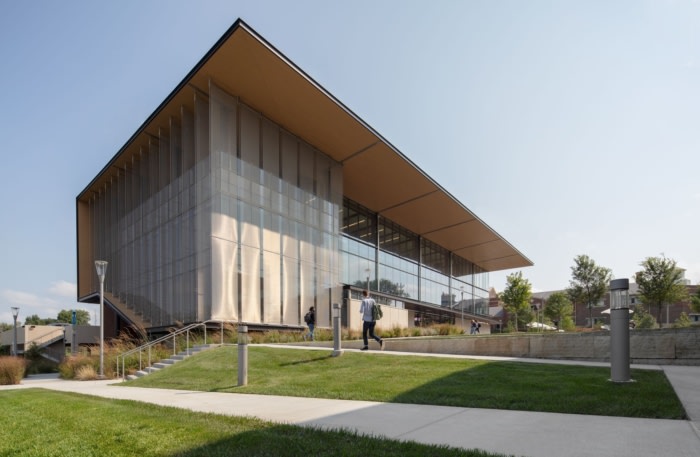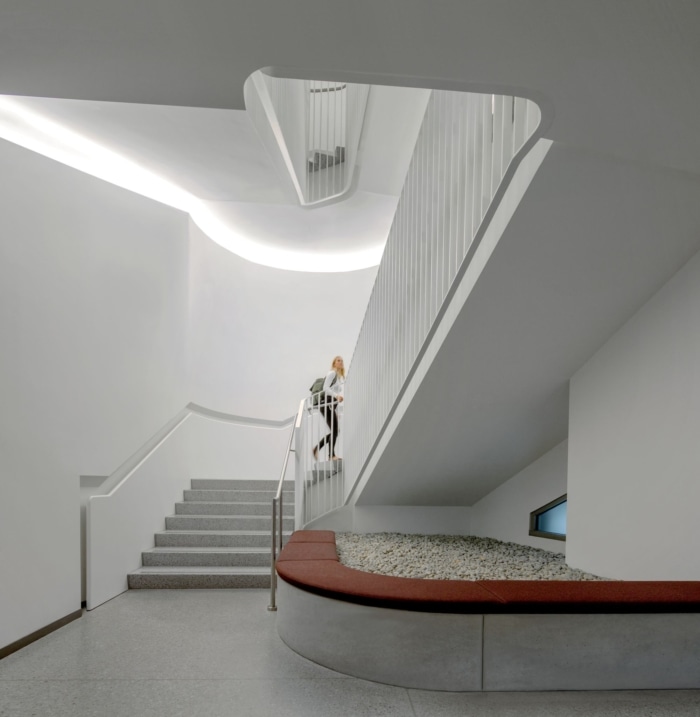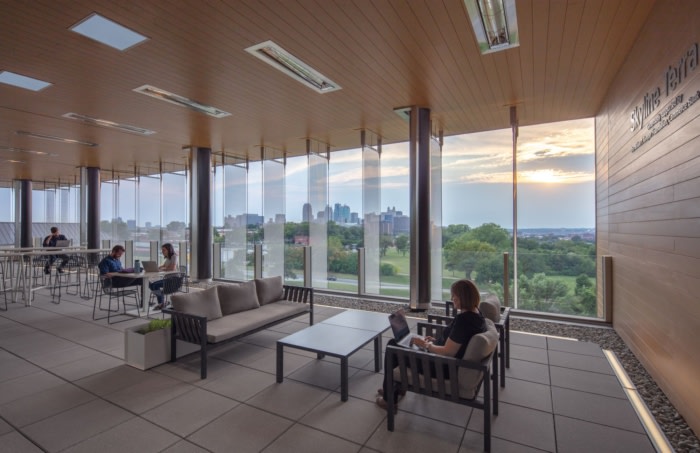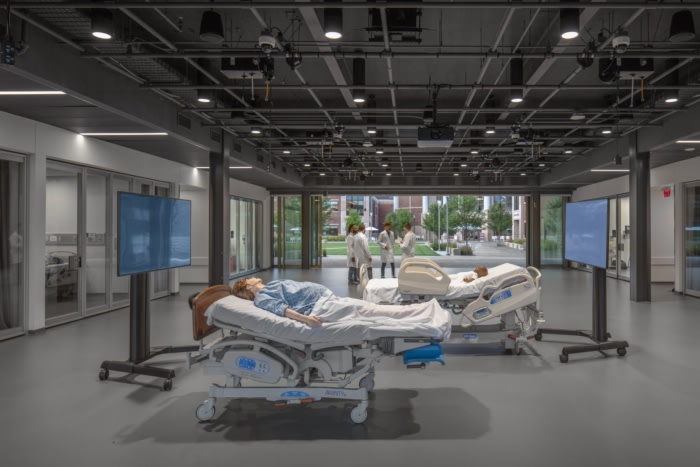Kansas City University – Center for Medical Education Innovation
The Center for Medical Education Innovation by Helix Architecture + Design and CO Architects is a cutting-edge and flexible medical education building, featuring technology-rich labs and innovative design to support evolving pedagogy at KCU.
The Center for Medical Education Innovation (CMEI) is a state-of-the-art building that puts Kansas City University (KCU) at the forefront of clinical education and offers access to technology-rich labs. CMEI addresses critical programmatic needs for the campus, the first of a new generation of buildings at KCU that accommodate the ever-evolving nature of medical education. The highly transparent design transforms CMEI into a showcase of discovery and innovation, featuring environments such as the simulation deck, adaptable clinical skills suite, the osteopathic manipulative medicine lab, and a multi-purpose forum. The forum, an iconic volume that appears to hover above ground when viewed from the west, informs the campus culture — a place for lectures, studying, or socializing.
Medical education is constantly evolving. CMEI focuses on flexible, multi-purpose spaces in order to leverage the functionality of the building and fill in gaps that were previously missing on campus.
To “future-proof” the building and ensure its longevity, the building’s circulation, restrooms, and MEP systems were pulled to the perimeter and organized in somewhat separate volumes. This keeps most of each floor wide open, should the building need to be reconfigured in the future. Because these volumes contain more private spaces, they are clad in brick, which relates to the existing campus buildings. To continue to offer maximum flexibility to KCU as their curriculum evolves, the second level was left as shell space for future program.
In the early design phases, the University identified the standardized patient lounge as a historically underutilized space. To expand its functionality beyond single-use, the team devised a new arrangement. Typically, these lounges are surrounded by the exam rooms and lack access to natural daylight. At CMEI, the lounge is located along the garden level windows and separated from the exam rooms by operable glass partitions. Classroom exercises and simulations can spill out from the exam rooms into the lounge, and it can also become a student study space after hours. Both the lounge and the standardized patient rooms will receive natural daylight.
To meet KCU’s goals for innovation in education, the simulation rooms were located on the ground level and organized around a central simulation deck. The deck is an immersive black-box theater that opens onto the new campus quad. A theatrical pipe grid was installed over the simulation deck, and power, simulated air, and simulated medical gas were installed on cord reels spread throughout the deck to facilitate the space being set up in any way the University wants. With this layout and approach to building systems, simulation exercises can be run from a trauma scene outside on the quad all the way through treatment in the simulation rooms. The possible simulation scenarios, including mass casualty events, are limited only by the faculties’ imaginations.
CMEI fulfilled multiple needs on KCU’s campus, chief among them being the need for state-of-the-art simulation tools to support their innovative pedagogy. Prior to CMEI’s construction, students were only able to experience two non-specific simulations during each of their first two years. With CMEI, students can experience almost 40 by the time they reach their third-year clinicals, thus reducing errors and building student confidence. Although it opened in February 2020 — just one month before nationwide stay-at-home orders — KCU students and faculty were still able to utilize the building for instruction due to its integrated technology and multi-purpose spaces that allowed for class to happen in atypical configurations.
CMEI blends indoor and outdoor spaces to form direct connections between the building, its campus, and the surrounding community beyond. Most importantly, the building prioritizes the health and well-being of students and faculty. Almost 80 percent of regularly occupied spaces have access to quality views through the expansive glass. To offer users a variety of experiences, an outdoor terrace was created on the top level of the building. CMEI is LEED Silver certified.
Design: Helix Architecture + Design
Architect: CO Architects
Photography: Bill Timmerman























